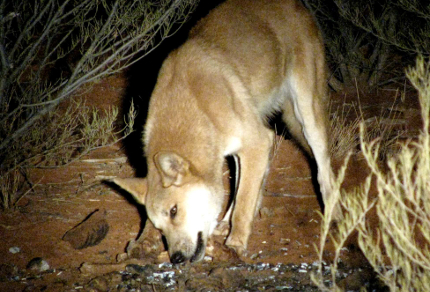Western Australia, Day 18
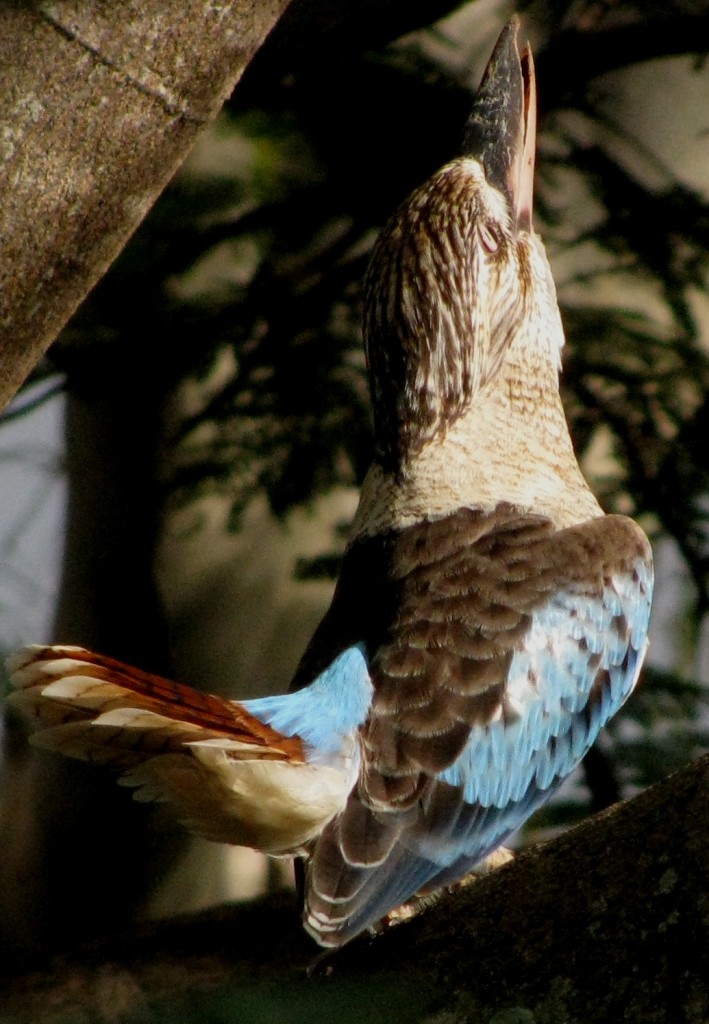
Female Blue-winged Kookaburra Vocalizing (© Vilis Nams)
The crazed laughter of kookaburras soared into the dawn air, the particular group in my neighbourhood singing a maniacal song of territorial defence.1 Kookaburras maintain permanent group territories1 and defend them not only with their wild, quintessentially Australian dawn chorus, but also with ritualized circular flights across territorial border lines and with trapeze-like, gliding displays to and from trees.2
Australia is home to two of the world’s four kookaburra species,3 the laughing kookaburra and blue-winged kookaburra. The blue-winged kookaburra also occurs in New Guinea, as do the rufous-bellied and spangled kookaburras.4 I’ve observed and heard both laughing and blue-winged kookaburras in our neighbourhood as well as elsewhere in Australia (including Tasmania, where kookaburras were introduced and are considered vermin5). The laughing kookaburras produce characteristic high-amplitude chortling guffaws and “koo-koo-koo-ha-ha-ha-ha!” calls. Blue-winged kookaburras emit similarly loud barking screeches that my bird guide describes as “appalling… developing into a cacophony of mechanical squawks, screeches; in chorus.”6 The kookaburra choruses increase in frequency and intensity as breeding season from August to January6 approaches.7 Should be interesting. Look for another post at a later date that focuses entirely on kookaburras.
Western Australia: Evenings at Cunyu station involved cooking over a campfire, staring into spark-spitting flames, and spotlighting for wildlife.

Campfire at Cunyu, with Gus McNab and Janis (© Vilis Nams)
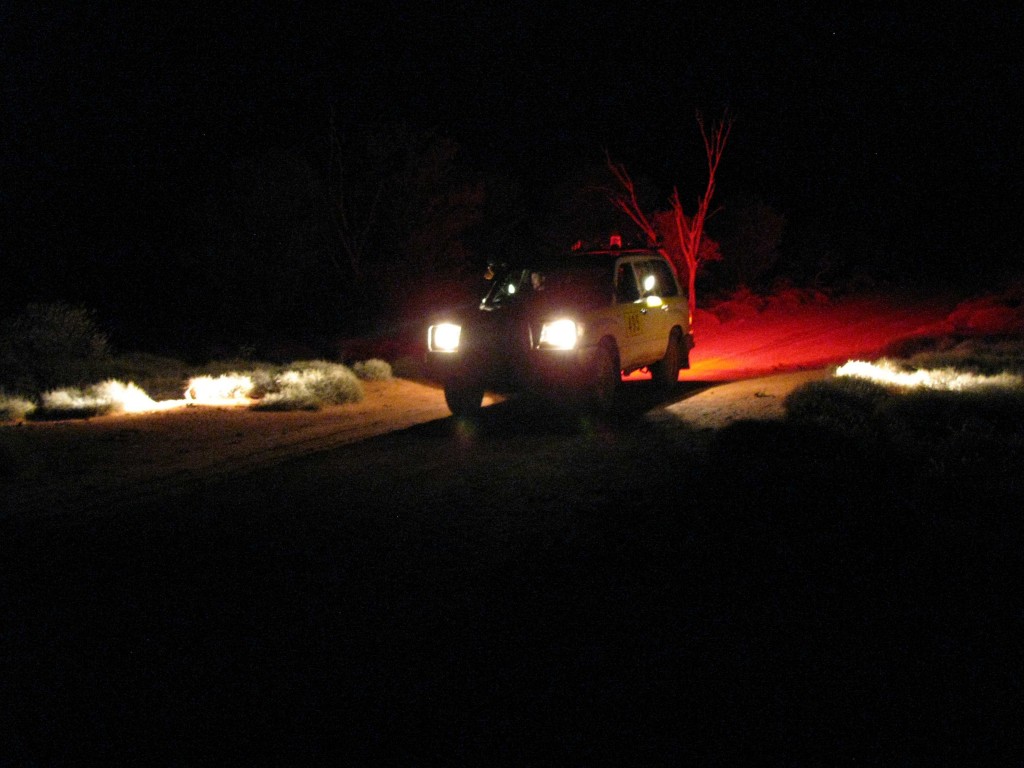
Spotlighting for Wildlife (© Vilis Nams)
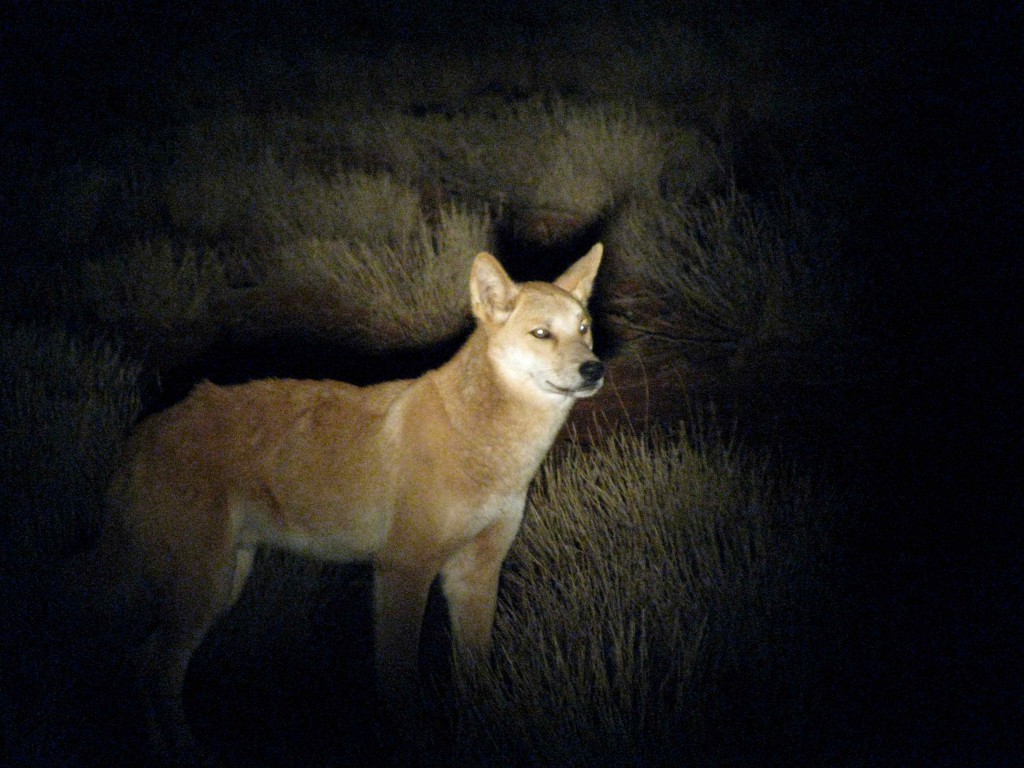
Dingo Night Portrait (© Vilis Nams)
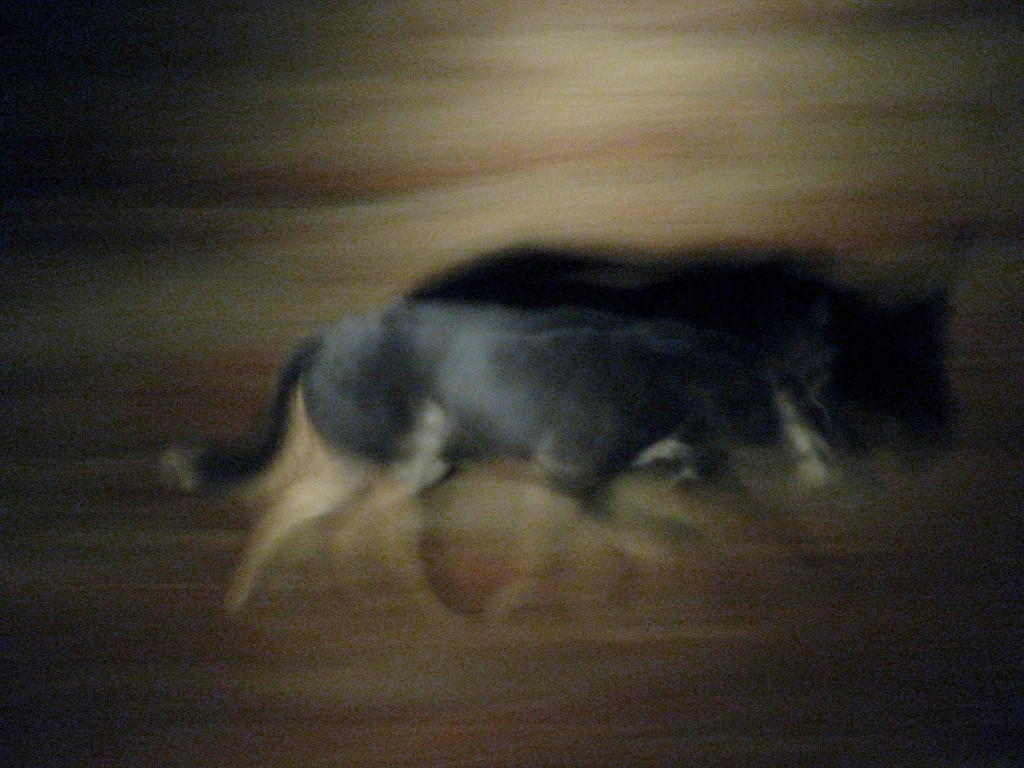
Black Dingo (© Vilis Nams)
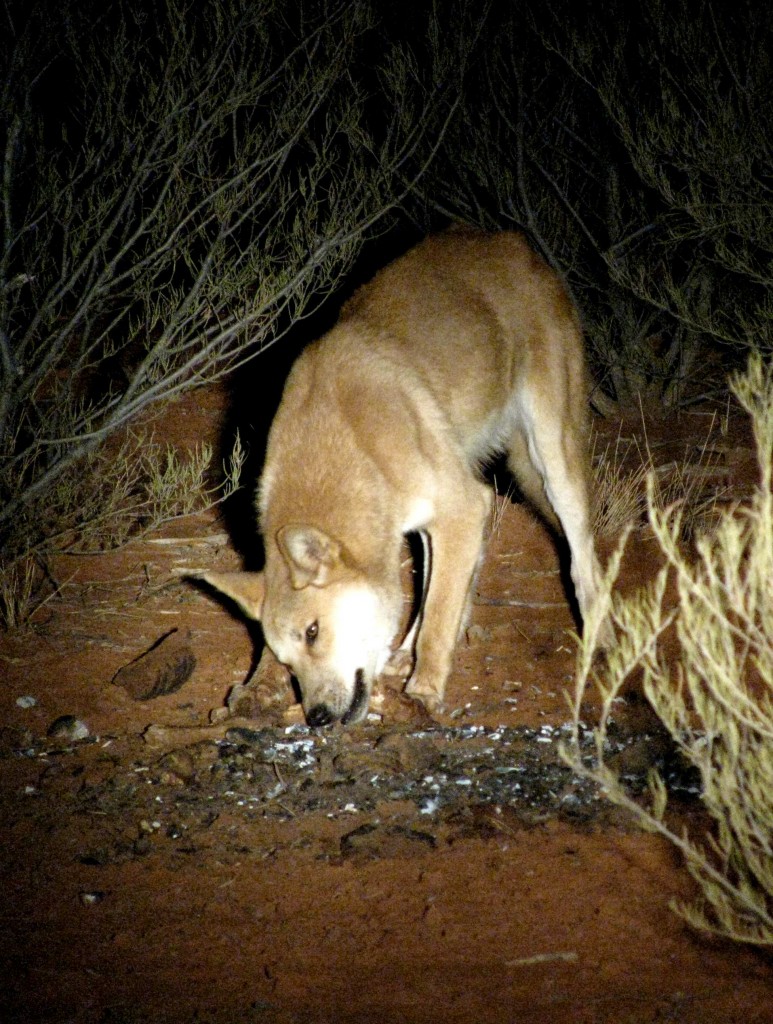
Dingo Spotlighted Chewing on Bones at Old Campfire (© Vilis Nams)
References:
1. Sarah Legge. Kookaburra, King of the Bush. 2004. CSIRO PUBLISHING, Collingwood, Victoria. p. 45; 2. Ibid, p. 46; 3. Ibid, p. 20; 4. Ibid, p. 20, 27; 5. Ibid, p. 33.
6. Graham Pizzy and Frank Knight. The Field Guide to the Birds of Australia. 1997. Angus & Robertson, Sydney. p. 316.
7. Legge, p. 47.

